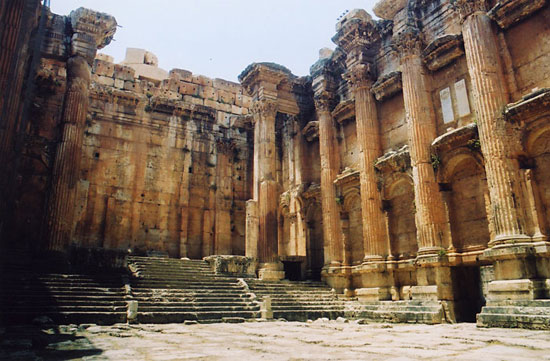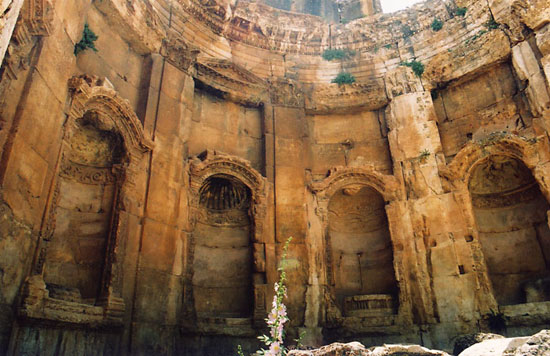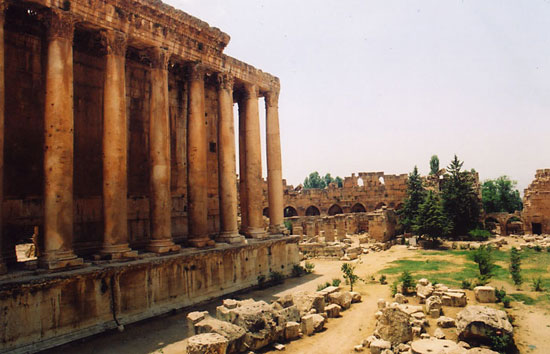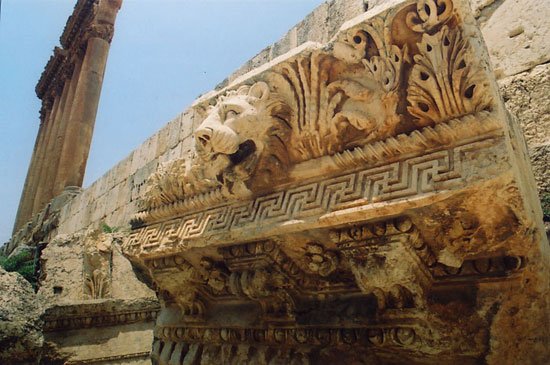Baalbek Roman Architecture
 |
I came from Beirut, and detail the horrors of the bus journey in my entry So Where's the Lebanese Delight? Haggle for the price, but in general most drivers will stick with 5000LL. Most likely, if an incredibly low fare is agreed upon, the driver will claim not to know English later, and demand the 5000LL.
When I arrived in Baalbek, the driver asked when I wanted to be picked up. I don't know if he really planned to come back for me... there isn't a real minibus schedule. Maybe he was just curious.
 |
After climbing the grand stairway, I passed into the hexagonal courtyard, then the immense Great Courtyard, which features an altar and the base of the former Great Tower. But the temples are what I came to Baalbek to see.
In 15 B.C. Julius Cesar settled a colony in Heliopolis, the City of the Sun, and began construction on the massive Temple of Jupiter. It was to be the largest such temple in the entire Roman Empire, but after a century and a half of construction, it was still incomplete. Today, only a few columns remain, as the rest was destroyed by earthquakes or looted.

Temple of Bacchus
 |
Out in the pleasant small town, I purchased an exquisitely delicious shwarma for much less than in Beirut, tried out some Arabic words on a confused but kind pastry shop proprietor, and people-watched until my bus returned. Maybe it was just time for all buses to return, I wasn't clear on that because suddenly there were four minibuses and a bunch of shouting drivers and assistants grabbing me and promising prices they wouldn't stick to and tourists scrambling to avoid being stuck in the empty bus. It was a busy, often annoying day, but Baalbek is a fascinating site and an absolute necessity when in the area.

Ceiling detail